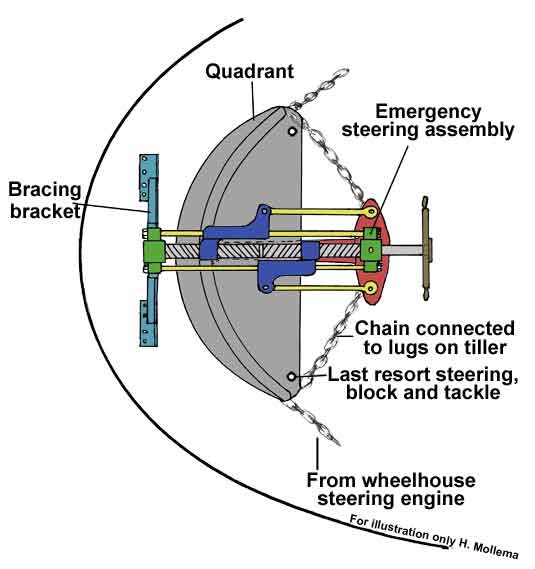John Oxley Steering System
Click on the illustrations for a larger version.
The main steering is driven by a steam powered steering engine in the wheelhouse. It drives a set of chains and rods that are connected to the quadrant. Tension in the linkage is maintained with a set of springs. The quadrant is riveted to the tiller, which in turn is keyed to the rudder stock. The steering chains curve around the periphery of the quadrant and are secured to the lugs on the tiller near the rudder stock.
The emergency steering is used when the main steering is in-operative. It consists of a left and right handed screw thread that drive the steering arms. Turning the wheel at the front of the assembly to starboard will move the forward arm on the tread forward and the aft arm aft.
The link bars from these arms are connected to the cross head with pins. The crosshead is keyed to the rudder stock. It will make the rudder to move to a starboard helm position.
The emergency steering is disconnected in normal operation. The pins are stored in a flat plate with three holes matching the centre pin in the emergency steering assembly and the holes in the wings of the cross head.
This type of steering assembly originated in the hey-days of sailing ships in the mid 1800’s. Our own James Craig, Cutty Sark and Star of India are all fitted with the same type. Interestingly, the steering assembly was made in Sunderland where the James Craig was build.
The emergency steering wheel was hacked off and stolen. A donator is making a new steering wheel.
Block and tackle can be hooked up to the quadrant, if both the above steering mechanisms failed, and only as a last resort.




